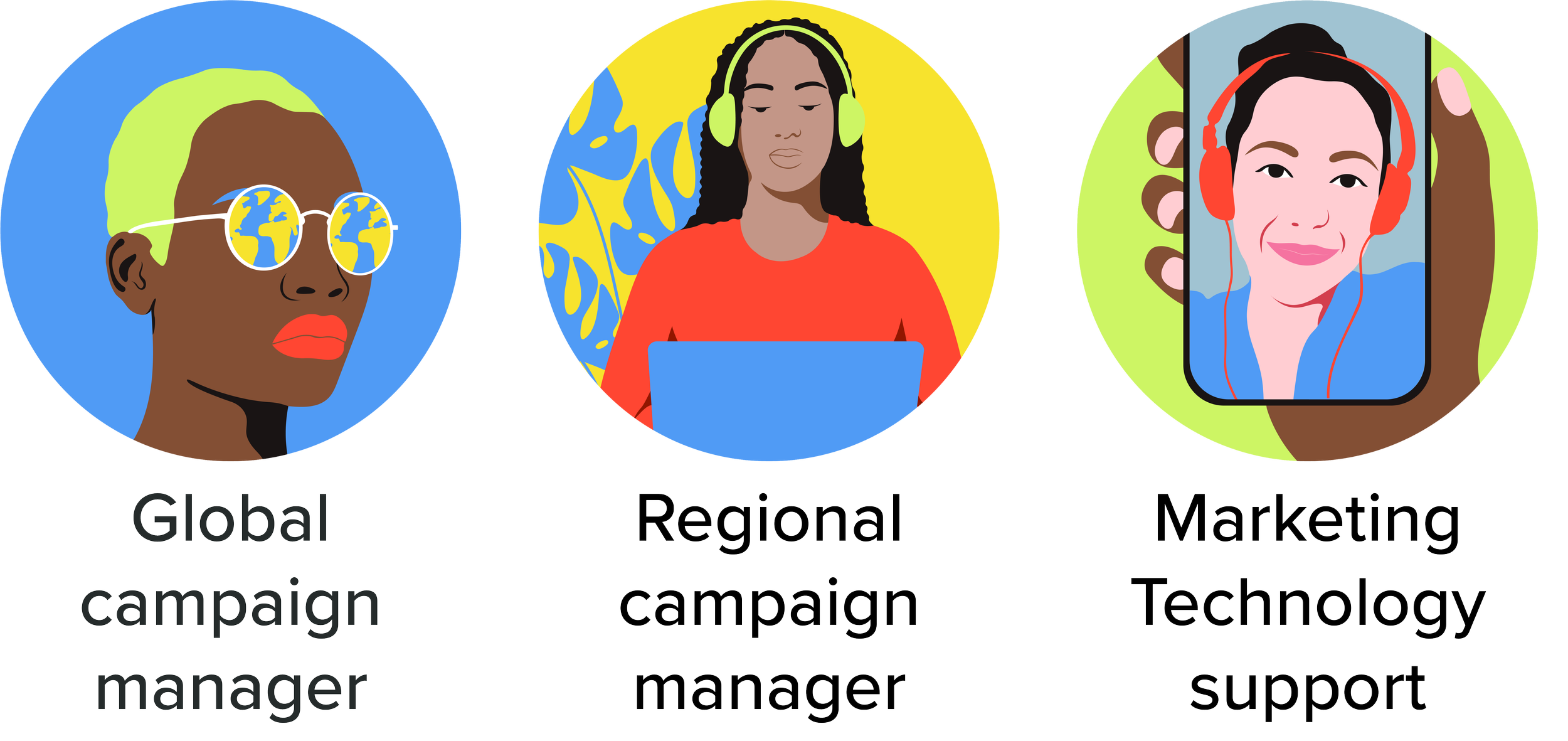Establishing the service delivered by a campaign configuration tooling team
Client: Spotify
Year: 2022-2023
Role: Individual contributor, Senior service designer and user researcher
Main responsibilities: : Internal user research, as-is journey and system mapping, facilitation, strategic direction, ideation, blueprinting, roadmapping
Core team: product manager, UX designer, engineering manager, marketing technology manager
Context
To move free users to premium, Spotify runs offers promoted in campaigns. Global and regional marketeers configure, launch and manage these campaigns pages in Toolbelt.
The problem to solve
Toolbelt was originally built by a team of engineers as a simple web page configurator.
With Spotify’s rapid growth, marketing campaigns became very complex. Campaign efforts blew up because of having to manually configure pages for multiple markets, audience segments, languages and products.
Toolbelt's architecture couldn't scale, and maintaining it left no room for the necessary strategic shift.
80% of revenue
at Spotify originates from a surface configured and managed in Toolbelt
Toolbelt users
8 weeks
needed to configure one global campaign
~500 Configurations
to create manually, on average for a global campaign
Phase 1 - Understanding end-to-end campaign operations via user research and strategic shift
Campaign configuration had overtaken marketeers’ workload to the point that they couldn’t take a step back and think strategically.
“It’s not something smart that you’re doing. Pressing, bam, etc. You can make a better use of time if these things got easier, simpler.”
- Campaign manager MENA
Efficiency
Extensive manual and inefficient efforts
⏳Time-intensive processes, inefficient workflows and navigation
🐞 Bugs: time to report and delays
👀 Time to manually review due to lack of trust
Consequences
💸 High operating cost of campaigns
💰 Cost opportunity of configuration time, no time to work on quality
Autonomy
Campaigns are limited by missing self-serve capabilities
🧮 Giving up on ambitions to avoid dependencies and delays
❓Lack of data and insights
👤Custom audience bottlenecks
Consequences
😱 Expensive yet rudimentary campaigns not meeting Spotify experience standards
🚧 Bottlenecks and delays
Competence
Shoehorned workflows require prescriptive training limiting use
🛟 Inability to operate without extensive training or support
😶🌫️ Poor feature awareness and use beyond instructed steps
Consequences
🌪️ Extensive support needed takes away the marketing technology team from strategic capability work
🪫 Marketing team churn because of boredom
I further broke down processes, pain points and opportunities throughout the end-to-end campaign operations.
I worked with the engineering team to shift their perspective.
Users are now "campaign managers", not"operators."
Mission is now to enable campaign managers to best convert users
Measuring success to efforts saved and redirected to campaign quality and performance, not by usage
This allowed to change priorities:
Reducing campaign efforts for marketeers to have bandwidth
Allow more agile configuration, by reducing sequential nature
Removing dependencies to reduce time to market to deliver smarter campaigns
Reduce duplications with greater integrations in between tools
Fostering an innovation driven marketing culture where pushing campaign boundaries is not in the back burner
Phase 2 - Establishing capabilities to support the evolution of Spotify’s business
I worked with Spotify market leaders and their team to articulate their evolving marketing need in the context of an evolving business.
Phase 3 - Establishing new workflows, the solutions enabling them, responsibilities and service performance measurements
From a “North star” and through regular engagements, we could start imagining, then shaping supporting solutions and workflows.
I tied all of these in a service blueprint including product capabilities, performance metrics and ownership. We established horizons with the product manager and developed a roadmap
Phase 4 : Prototyping efficiency driving workflows to start establishing Toolbelt new technical architecture
Using the insights and service blueprint as input, we generated solutions in a one week design sprint with stakeholders, users and engineers.
I produced rough concept prototypes to test with users our concepts of defaults and overrides.
After encouraging testing, the team’s UX designer further developed wireframes and iterate based on initial learnings
Impact
🎯 The First release for regional campaigns reduced configuration time by over 80%.
“You brought so much impact, joy, laughter and confidence to the team. You taught us to drill the “why” to the core. You illustrated the most complex connections in the clearest ways. I loved working with you every day and I learnt so much.”
- Team product manager, Sony Gething
“You brought so much to the team and contributed more than anyone could have hoped for in such a short time. Your work will pave the way for LITERALLY years of toolbelt development. And you did that by being the most open, honest and sincere person I had the pleasure to work with.”
- Product area Design lead, Filipas Kotsis

